Complete Solutions to For JEE main (Only one option is Correct ) of chapter WAVE OPTICS of Class 12 book with complete answers and questions
| Class 12 | PHYSICS |
| Chapter | WAVE OPTICS |
| DC PANDEY MASTER PROBLEM PACKAGE | For JEE main (Only one option is Correct ) |
| Number Of Questions | 22 |
| Academic Year | 2023-24 |
If the first minima in Young's double-slit experiment occurs directly in front of one of the slits (distance between slit and screen `D = 12 cm` and distance between slits `d = 5 cm)`, then the wavelength of the radiation used can be
View SolutionPlane wavefronts are incident on a spherical mirror as shown, the reflected wavefronts will be
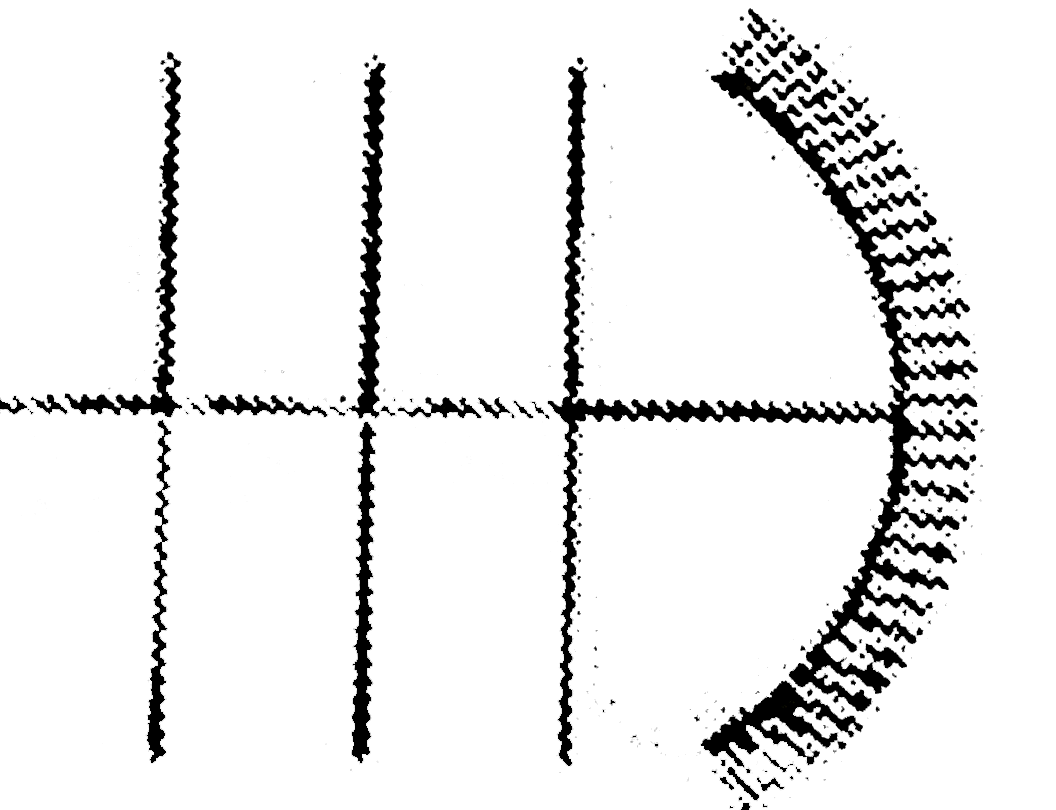
View SolutionFigure shows plane waves refracted for air to water. What is the refractive index of water with respect to air ?
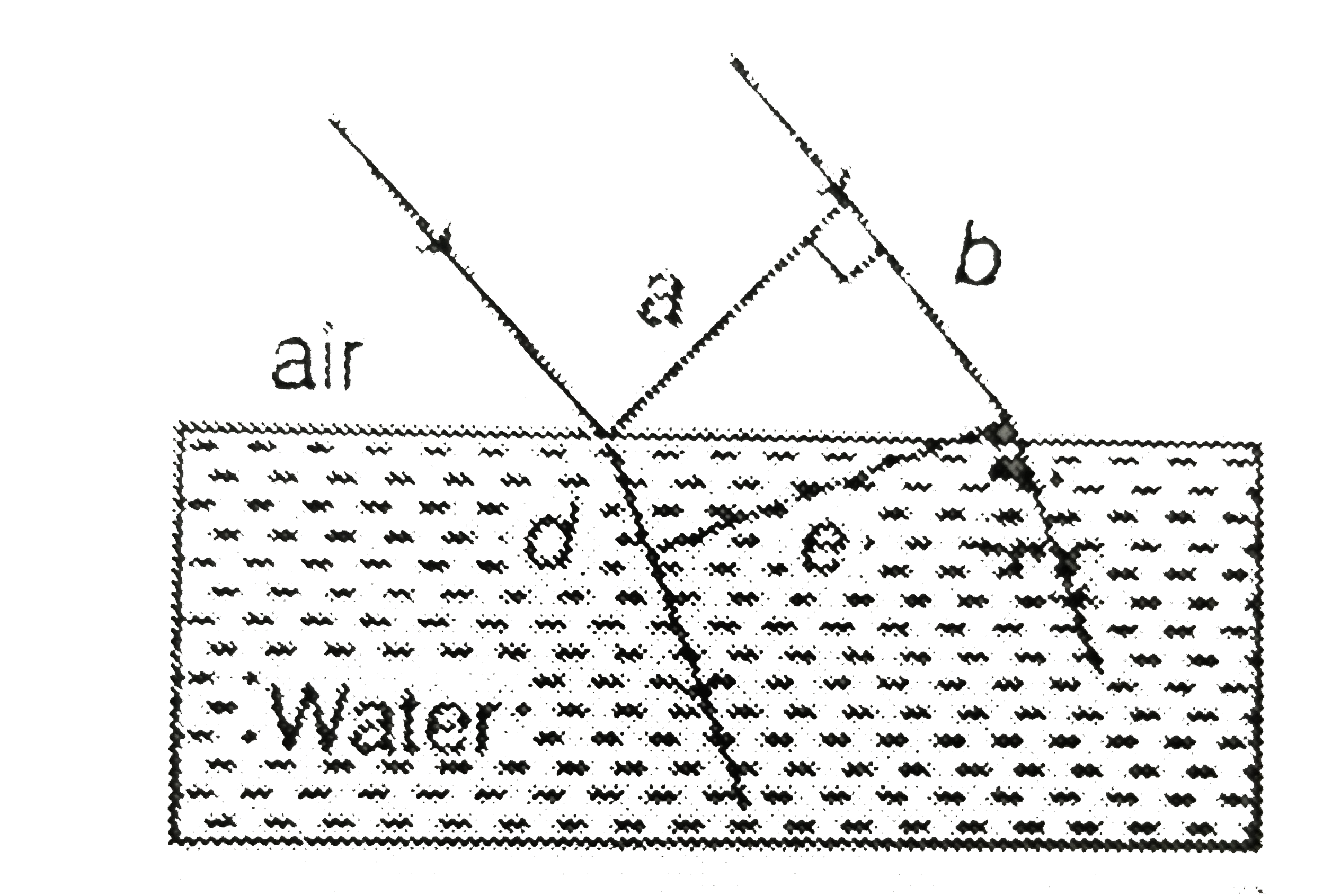
View SolutionIn Young's double slit experiment, the wavelength of red light is `7800 Å`. The value of n for which nth bright band due to red light coincides with `(n+1)th` bright band due to blue light`(lambda=5200Angstrom)`, is
View SolutionIn Young's double-slit experment, the frist maxima is observed at a fixed point P on the screen. Now, the screen is continously moved away from the plane of slits. The ratio of intensity at point P to the intensity at point O (center of the screen)
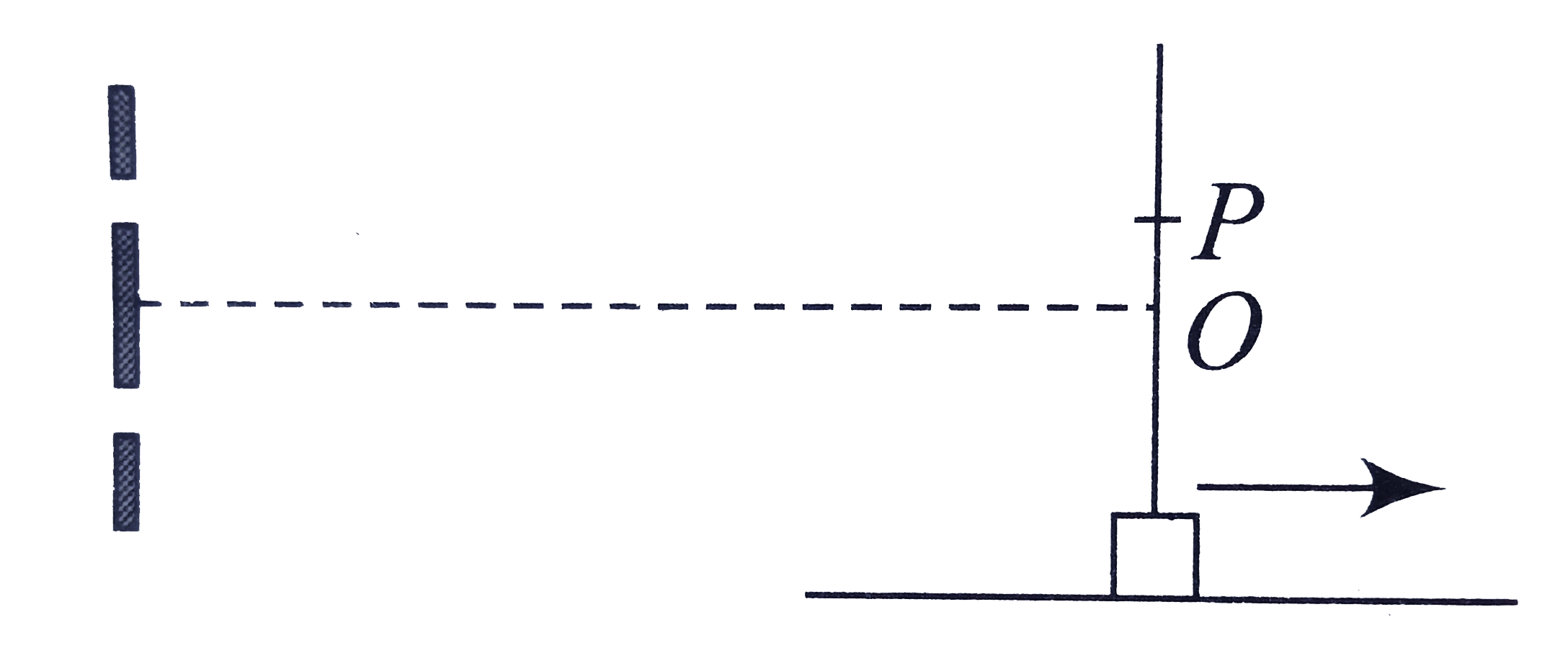
View SolutionIn a YDSE with two identical slits, when the upper slit is covered with a thin, perfectly tranparent sheet of mica, the intensity at the centre of screen reduces ro `75%` of the initial value. The second minima is observed to above this point and third maxima below it. which of the following can not be a possible value of phase difference caused by the mica sheet
View SolutionIn a double slit experiment ,the separation between the slits is `d=0.25cm` and the distance of the screen `D=100`cm from the slits .if the wavelength of light used in `lambda=6000Å`and `I_(0)`is the intensity of the central bright fringe. The intensity at a distance `x=4xx10^(-5)`in form the central maximum is-
View SolutionA thin film of thickness `t` and index of refractive `1.33` coats a glass with index of refraction `1.50`.What is the least thickness `t` that will strong reflect light with wavelength `600nm` incident normally?
View SolutionTwo parallel rays are travelling in a medium of refractive index `mu_(1)=4//3`. One of the rays passes through a parallel glass slab of thickness t and refractive index `mu_(2)=3//2`. The path difference between the two rays due to the glass slab will be
View SolutionLight waves travel in vacuum along the y-axis. Which of the following may represent the wave front?
View SolutionA plate of thickness t made of a material of refractive index `mu` is placed in front of one of the slits in a double slit experiment. (a) Find the changes in the optical path due to introduction of the plate. (b) What should be the minimum thickness t which will make the intensity at the center of the fringe pattern zero ? Wavelength of the light used is `lamda`. Neglect any absorption of light in the plate.
View SolutionYoung's double slit experiment is made in a liquid. The tenth bright fringe in liquid lies in screen where 6th dark fringe lies in vacuum. The refractive index of the liquid is approximately
View SolutionA monochromatic beam of light fall on YDSE apparatus at some angle (say `theta`) as shown in figure. A thin sheet of glass is inserted in front of the lower slit `s_(2)`. The central bright fringe (path difference `= 0`) will be obtained
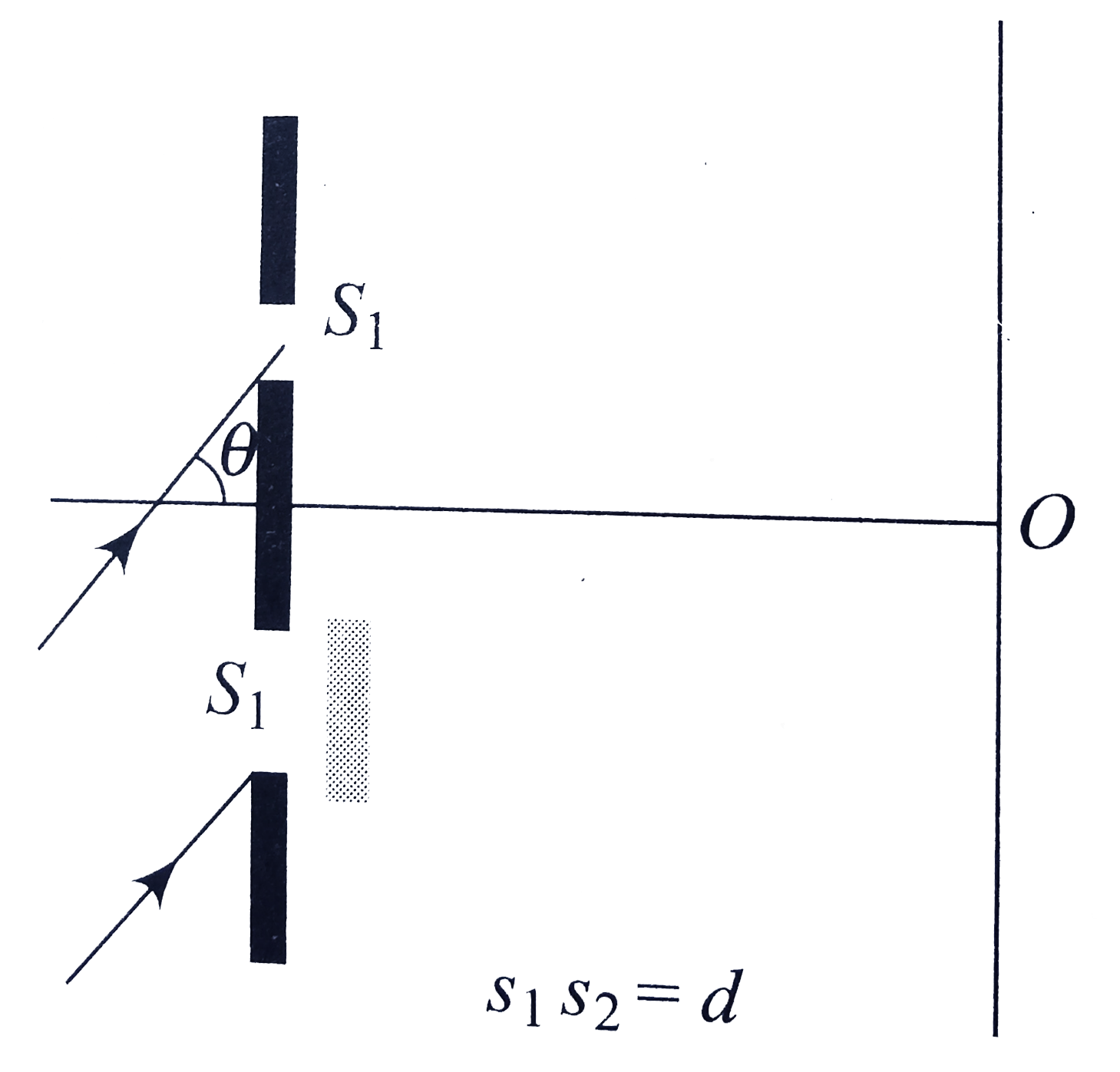
View SolutionIn Young's double-slit experiment, the separation between the slits is halved and the distance between the slits and the screen in doubled. The fringe width is
View SolutionTwo coherent monochromatic light beams of intensities I and 4I are superposed. The maximum and minimum possible intensities in the resulting beam are
View SolutionTwo coherent point sources `S_1` and `S_2` are separated by a small distance `d` as shown. The fringes obtained on the screen will be
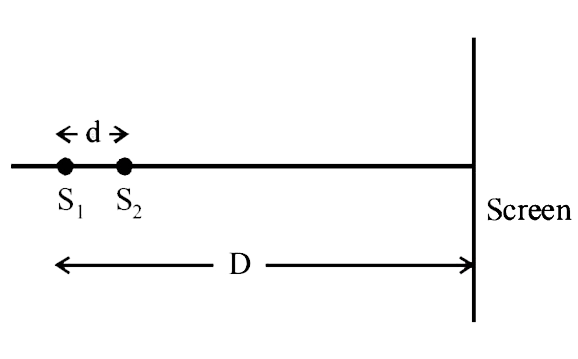
View SolutionIn the ideal double-slit experiment, when a glass-plate (refractive index 1.5) of thickness t is introduced in the path of one of the interfering beams (wavelength `lambda`), the intensity at the position where the central maximum occurred previously remains unchanged. The minimum thickness of the glass-plate is
View SolutionIn Young's double slit experiment, assume intensity of light on screen due to each source alone is `I_(0) and K_(1)` is equal to difference of maximum and minimum intensity. Now intensity of one source is made `(I_(0))/(4) and K_(2)` is again difference of maximum and minimum intensity . Then `(K_(1))/(K_(2))=`
View SolutionIn a double slit experiment the angular width of a fringe is found to be `0.2^(@)` on a screen placed I m away. The wavelength of light used in 600 nm. What will be the angular width of the fringe if the entire experimental apparatus is immersed in water ? Take refractive index of water to be `4//3`.
View SolutionIn Young's double slit experiment with light of wavelength `lambda=600 nm`, intensity of central fringe is `I_(0)`. Now one of the slit is covered by glass plate of refractive index 1.4 and thickness t=`5mum`. The new intensity at the same point on screen will be :
View SolutionFind the maximum intensity in case of interference of infinite identical coherent sources having intensities `I_(0),(I_(0))/(4),(I_(0))/(16),(I_(0))/(64),(I_(0))/(256)……..` (upto infinite).
View SolutionIn the figure shown, light waves A and B both of wavelength `lambda` are initially in phase and travelling rightward as incident by the two rays. Wave A is reflected from four parallel surfaces but ends up travelling in original direction. The possible value(s) of distance L in terms of wavelength `lambda` in figure which put A and B exactly out of phase with each other after all the reflected is/are

View Solution
For JEE main (Only one option is Correct ) questions and complete solutions for chapter WAVE OPTICS of DC PANDEY ENGLISH of Class 12
All Exercises from DC PANDEY MASTER PROBLEM PACKAGE Class 12 PHYSICS WAVE OPTICS
- Assertion reason
- Check point
- Example
- For JEE Advanced B. More than one option is correct
- For JEE Advanced C. Comprehension Type Questions. Passage (I)
- For JEE Advanced C. Comprehension Type Questions. Passage (II)
- For JEE Advanced C. Comprehension Type Questions. Passage (III)
- For JEE Advanced D. Matrix Matching type Questions.
- For JEE Advanced E. Integer Type Questions
- For JEE Advanced Only one option is correct
- For JEE main (Only one option is Correct )
- match column
- medical entrances
- taking it together